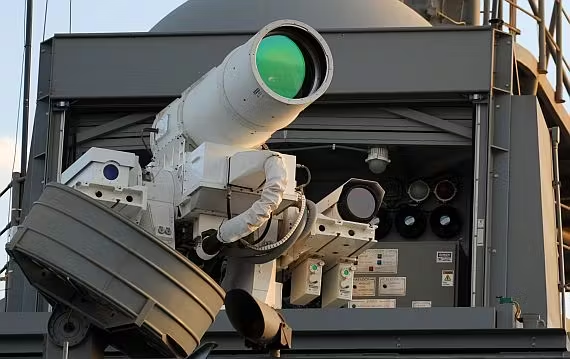Introduction
Directed Energy Weapons (DEWs) represent a revolutionary advancement in military technology, utilizing concentrated electromagnetic energy to incapacitate, damage, or destroy enemy assets without the use of traditional kinetic munitions. This innovative approach to warfare is gaining traction among military forces worldwide, driven by the need for effective countermeasures against emerging threats such as drones and hypersonic missiles. This article explores the principles, types, applications, and implications of directed energy weapons in modern military engagement.

Understanding Directed Energy Weapons
Definition and Mechanism
Directed Energy Weapons are systems that emit focused energy in the form of lasers, microwaves, or particle beams to engage targets. Unlike conventional weapons that rely on projectiles, DEWs operate at the speed of light, allowing for instantaneous engagement of targets. The effectiveness of DEWs depends on several factors, including energy output, distance to target, and environmental conditions.
Types of Directed Energy Weapons
1. High-Energy Lasers (HEL): HELs emit concentrated beams of light in the infrared to visible spectrum. They can deliver power outputs ranging from a few kilowatts to several megawatts. Applications include targeting drones, missiles, and other aerial threats by melting or damaging critical components.
2. High-Power Microwave Weapons (HPM): HPM systems generate microwaves that can disrupt electronic systems or incapacitate personnel without causing permanent damage. These weapons are effective against swarming tactics by disabling multiple targets simultaneously.
3. Millimeter Wave Weapons: Operating in the 1 to 10 millimeter wavelength range, these weapons can affect multiple targets with a broader beam while delivering significant power.
4. Particle Beam Weapons: Although still largely experimental, these weapons utilize charged or neutral particles to damage or disrupt targets.
Advantages of Directed Energy Weapons
1. Cost-Effectiveness: DEWs have the potential for lower operational costs compared to traditional munitions. Once developed and deployed, they can fire indefinitely as long as there is sufficient power supply, eliminating the need for expensive ammunition resupply.
2. Precision Engagement: The precision offered by DEWs minimizes collateral damage by allowing military forces to target specific components or systems rather than relying on explosive ordnance that affects broader areas.
3. Speed of Engagement: Operating at the speed of light means DEWs can engage targets almost instantaneously, making them particularly effective against fast-moving threats such as missiles and drones.
4. Versatility: DEWs can be tailored for various effects ranging from non-lethal (disabling electronics) to lethal (destroying targets), providing military commanders with graduated response options.
Challenges and Limitations
Despite their potential advantages, directed energy weapons face several challenges:
1. Atmospheric Interference: Weather conditions such as fog, rain, or dust can significantly reduce the effectiveness of DEWs by scattering or absorbing energy before it reaches the target.
2. Range Limitations: The effectiveness of DEWs diminishes with distance; thus, maintaining line-of-sight is crucial for successful engagement.
3. Power Requirements: High-energy lasers and microwaves require substantial power sources, which can limit mobility and deployment options.
4. Regulatory and Ethical Concerns: The development and use of DEWs raise questions about compliance with international laws regarding warfare and potential humanitarian impacts.
Global Developments in Directed Energy Weapons
Countries like the United States, China, Russia, India, and several European nations are investing heavily in directed energy technologies:
-
- United States: The U.S. Department of Defense has made significant investments in DEW research through various branches including DARPA and the Navy. Programs focus on integrating high-energy lasers into naval vessels and ground-based systems for air defense.
- China: China is actively developing DEW capabilities as part of its broader military modernization efforts, with reports indicating advancements in both laser and microwave technologies.
- India: The Defence Research and Development Organisation (DRDO) is spearheading efforts to develop DEWs for countering asymmetric threats such as drones. Notable projects include KALI (Kilo Ampere Linear Injector) and DURGA (Directionally Unrestricted Ray-Gun Array).
Practical Applications
Directed energy weapons are particularly suited for countering specific threats:
1. Countering Drones: DEWs offer effective solutions for neutralizing unmanned aerial systems (UAS) that pose risks to military installations and personnel.
2. Missile Defense: While still facing technological challenges for intercepting advanced missile threats like ICBMs, DEWs are being explored as cost-effective solutions against slower-moving cruise missiles.
3. Urban Warfare: The precision targeting capabilities of DEWs make them suitable for urban environments where minimizing collateral damage is critical.
Conclusion
Directed Energy Weapons represent a paradigm shift in military engagement strategies, offering unique advantages such as cost-effectiveness, precision targeting, and rapid response capabilities. As research and development continue to advance this technology, it holds promise for enhancing national security and addressing emerging threats on the battlefield.
However, challenges related to atmospheric conditions, power requirements, and ethical considerations must be carefully navigated as nations integrate these systems into their defense arsenals. The future of warfare may increasingly rely on directed energy technologies as militaries seek innovative solutions to evolving security challenges.
Spread the Word
